The choice of a hook can be confusing for a novice angler. The thing is that there is a huge selection of fishing accessories on the market, which are produced in different countries. And these hooks are classified and made according to the standards inherent in this country. Therefore, the number 10 hook will have different sizes in different countries. In addition, online stores are popular today, and many anglers shop there. And from the picture on the screen it can be difficult to determine what the actual size of the product is. Some sellers post pictures of the hooks next to the ruler so that you can imagine their sizes. But there is not always such a visual comparison. In order not to be mistaken in the choice, you need to understand the existing classifications.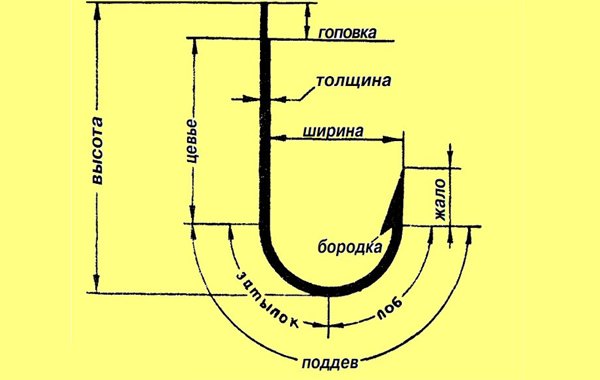
Fishing hooks classification by numbers in different countries – types with tables
There are several main classifications and numbering of hooks on our market. Firstly, this is the
domestic classification . The logic behind this classification is extremely simple. The number assigned to the hook is the width in millimeters from the forend to the tip (see photo above). Hook number 10 means that from forend to tip is 10 mm. Hook 4 numbers respectively 4 mm. The larger the number, the larger the size. The minimum size is 2, but the maximum size is 16.
International classification– this is originally the English numbering of the hooks, made on a reddish scale. In the city of Redditch, England, there is an old factory for the production of fishing accessories. The numbering adopted at this plant became popular and began to be used in many other enterprises. Here the numbering goes in the opposite direction compared to the domestic one. The larger the number, the smaller the hook. 10 hook according to the international classification corresponds to our hook number 5. Above the first number (which corresponds to our number 10), the hook is assigned a number with a fraction – 1/0, 2/0, and so on.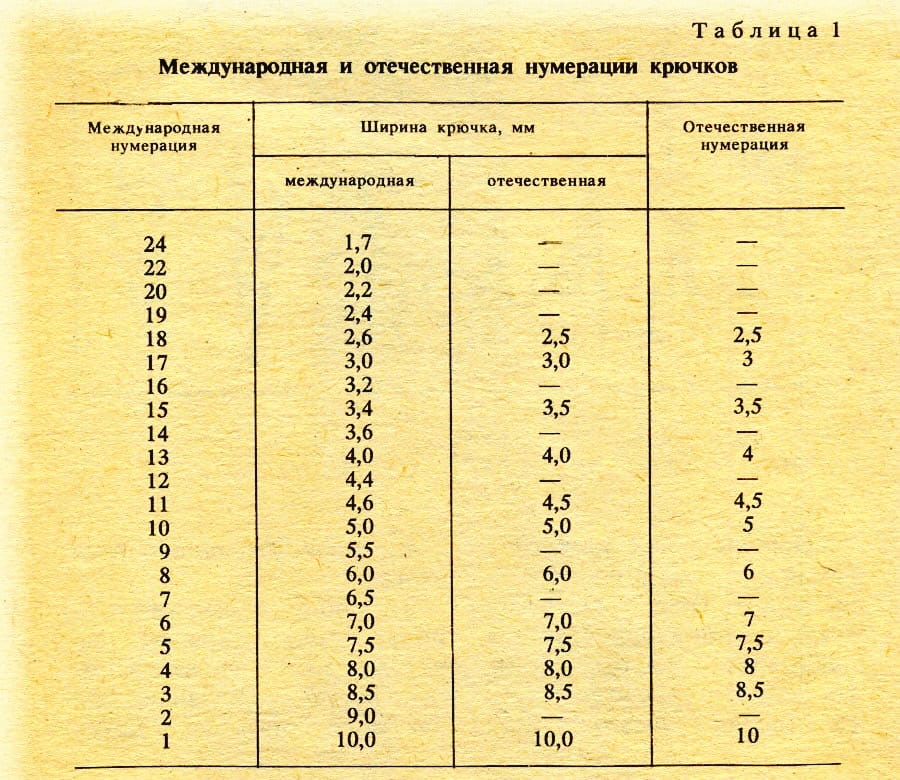
Japanesethe classification is very similar to the international one. However, the scale is shifted by 2 points. So number 2 according to the international classification corresponds to number 4 in Japanese.
The Finnish classification is the same as the Japanese one, but with some differences. However, there are no odd numbers in it. Also in the Finnish classification, numbers above the first are designated as in the international fractional number.
| Size in mm | Domestic numbering | International numbering | Japanese numbering | Finnish numbering |
| sixteen | sixteen | 3/0 | – | 3/0 |
| fourteen | fourteen | 2/0 | – | 2/0 |
| 12 | 12 | 1/0 | – | 1/0 |
| 10 | 10 | one | – | one |
| nine | nine | 2 | 4 | 4 |
| 8.5 | 8.5 | 3 | five | – |
| eight | eight | 4 | 6 | 6 |
| 7.5 | 7.5 | five | 7 | – |
| 7 | 7 | 6 | eight | eight |
| 6.5 | – | 7 | nine | – |
| 6 | 6 | eight | 10 | 10 |
| 5.5 | nine | eleven | – | |
| five | five | 10 | 12 | 12 |
| 4.5 | 4.5 | eleven | 13 | – |
| 4.25 | – | 12 | fourteen | – |
| 4 | 4 | 13 | fifteen | fourteen |
| 3.75 | – | fourteen | sixteen | – |
| 3.5 | 3.5 | fifteen | 17 | sixteen |
| 3.25 | – | sixteen | 18 | – |
| 3 | 3 | 17 | nineteen | 18 |
| 2.5 | 2.5 | 18 | twenty | twenty |
| 2 | 2 | nineteen | 21 | 22 |
| 1.75 | – | twenty | 22 | – |
How to choose the size of the hook
To select the size, you need to proceed from two factors: the size of the bait and the size of the fish that will be caught. While swallowing the hooked bait, the fish should not feel the hook, but at the same time, he should notice it during the hook, and not just slip out of the fish’s mouth. For larger baits such as
corn or
peas, you will need suitable hooks. This is number 6 or 4 according to international numbering. For semolina, use very small hooks, size 16-18. The same dimensions are used when
fishing with a feeder . Athletic feeders often use very small hooks and successfully catch large fish such as
bream with them . For large fish such as
carp or large crucian carp in
bottom fishing or
float fishing use hooks of size 6 or 8.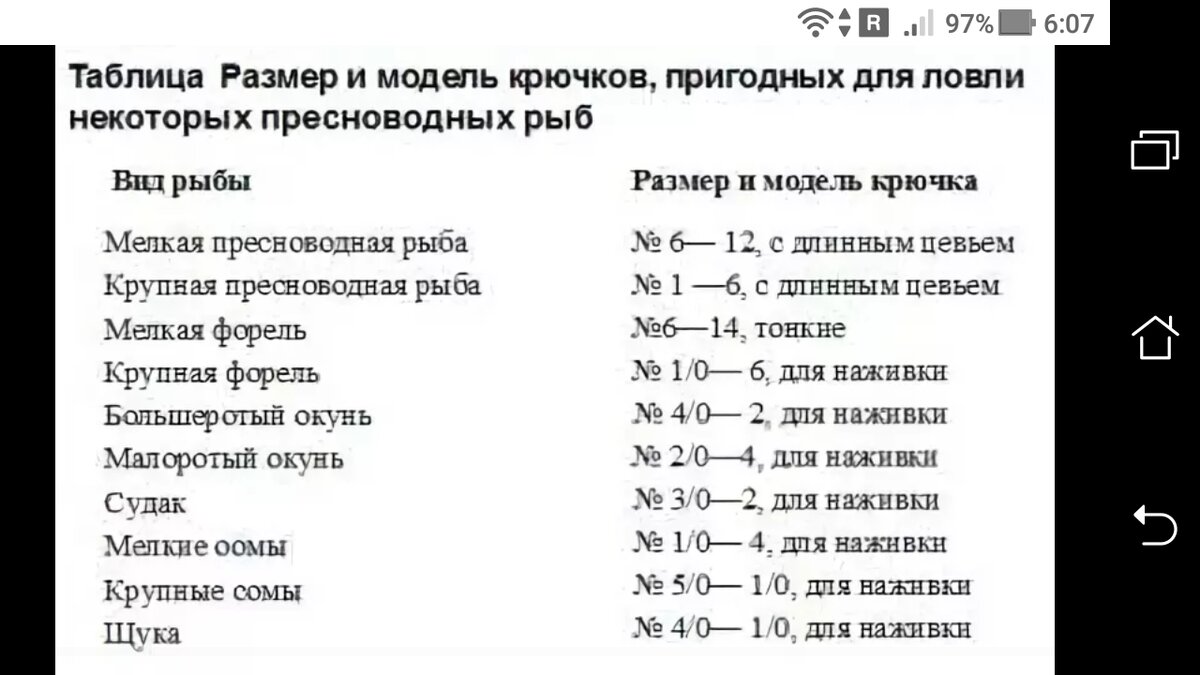
How to choose an offset hook for a silicone bait
Another type of hook that is not so easy to pick up under the bait is offset hooks. They are used to equip silicone lures on articulated rigs. In order to choose the right hook size, you need to pay attention to several factors. In addition to the size, the hooks differ in shape. There are several basic forms of offset crochet hooks. First, there are Texas hooks
. Hooks of this shape are used with thin-bodied baits such as worms, slugs, fine vibrotails and other baits.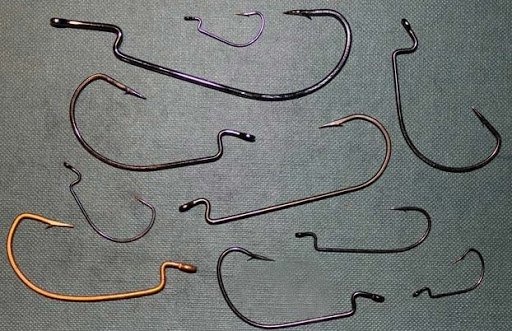
… They are more suitable for larger, thicker lures such as plump fish tails. One of the main parameters when choosing a hook should be the free play of the hook in the bait. Even if the sting of the hook hides as close as possible to the body of the bait, when biting a predatory fish, the sting should be exposed. Otherwise, there will be a lot of fish coming off due to a weak serif, or it will not be detected at all. Usually, the size of such a move can be as large as the thickness of the bait itself, which means that the hook can be twice the thickness of the bait. If we talk about the number of the hook, then it cannot be selected based only on the size of the bait. When equipping a silicone bait with offset, you need to pay attention to the shape of the bait. The offset must come out of the body of the bait to its moving part, otherwise it will affect its play. This is especially true for passive baits.On them, the sting of the hook should come out somewhere in the middle of the bait. Therefore a 3 “Boxer” jig may require a 1/0 hook, and a 3 “Shade” jig will require a 3/0 offset.
Dimensions and numbering of fishing tees and doubles: table
Tees and doubles are used to catch predatory fish. Artificial baits are equipped with them and live baits are planted on them. The size is selected based on the size of the bait itself or live bait. In the classification of the sizes of twins and tees, the same standards are used as for conventional hooks. That is, in the domestic numbering, the hook number corresponds to the distance from the forend to the tip. So the number 4 tee will have a length from the forend to the tip of 4 mm. For tees and doubles numbered according to the international classification, the same principle is used as for single hooks. Double of 2 numbers, these are two hooks of 2 numbers according to the international classification, welded together. In domestic numbering, it corresponds to number 9, or 9 mm from the tip to the forend. Hook number 5, these are two hooks number 5, etc.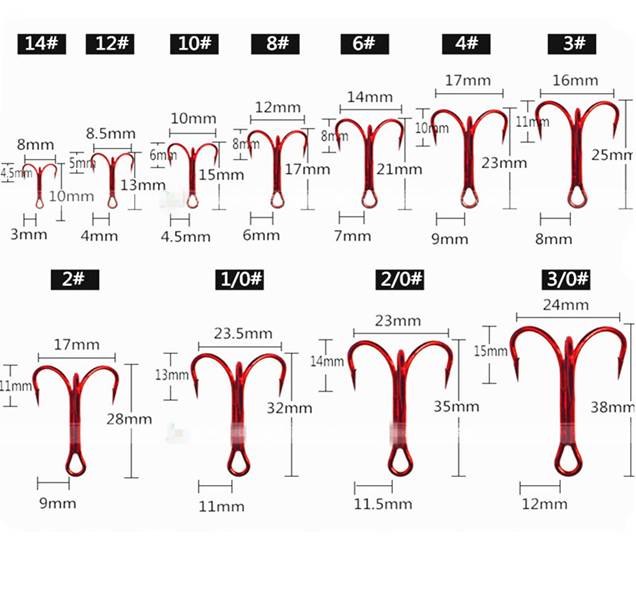
Additional options for selection
In addition to size, there are many factors that influence the choice of hooks. It is the shape, the material it is made of, and even its color. For fishing using worms as bait, a hook with a long forearm is suitable. In this case, the size of the hook can be small, and thanks to the long fore-end, the hook is easier to get out of the mouth of the fish. Therefore, hooks with a
long forend are used when fishing for fish that tend to swallow the bait very strongly, for example, they catch gobies with them. When fishing with vegetable baits for all peaceful fish (crucian carp, roach, bream and others), hooks with a
shorter forend are used . These can be so-called “crucian” hooks, in which the forend is about a third longer than the sting.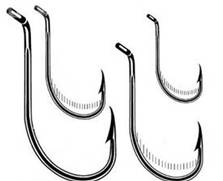
. In them, the forend and sting are the same in length. Such products are used with both sinking and floating nozzles. When a fish grabs the bait and puts it in its mouth, it does not feel the hook until a certain moment. As soon as the carp notices it and tries to spit it out, this shape of the hook makes it possible to spot the lower lip of the fish. In addition, the sting is slightly bent towards the forearm, which also contributes to better fish detection.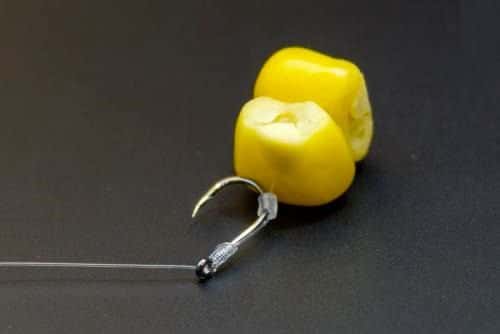
bent tip… It can be straight, or it can be bent to the left or right of the forend line. This constructive solution allows you to reduce the number of idle bites. It is sometimes marked on packages that the hook is bent in this way. Another type of bend of the sting is towards the forearm. It is also called ”
eagle’s claw “. A sting of this shape also shows good results. However, the sting should be bent slightly, no more than 1/3 of its length.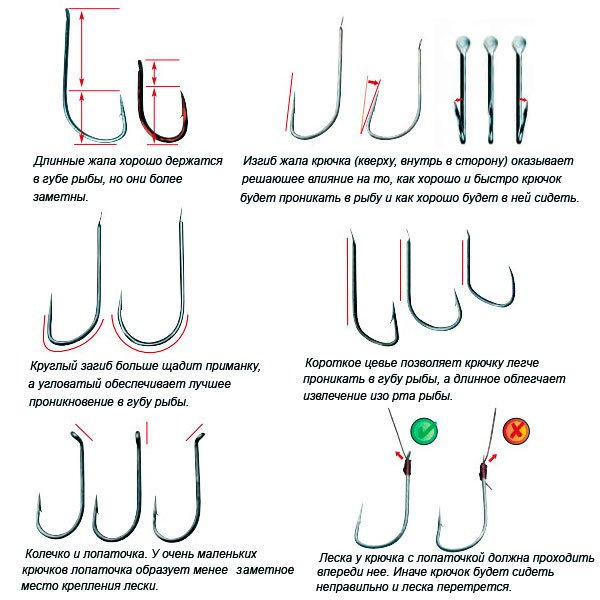
in material from which they are made . Most of them are made from alloyed and unalloyed carbon steels.
Colouralso plays a role. So many anglers try to pick up hooks to match the bait. This is especially important if the fish is very careful, additional masking in the color of the nozzle can have a beneficial effect on the bite:
- So, the golden color is good for corn.
- The red color can be used to attach a worm or bloodworm.
- The black color is hardly noticeable so it will not contrast at the bottom.
To protect the hook from corrosion, several options are used, which are indicated on the packaging with special designations:
- bluing (NB);
- nickel plating (N);
- gilding (G);
- bronze coating (BZ).
Another parameter is the mounting method. There are two main ones: using a
scapula or an abalone. The shovel hooks are knotted onto the forend. Eye hooks can be tied directly behind this eyelet. If you tie them to the forearm, then it is better that the eyelet is bent. Otherwise, the hook in the water will take the wrong position and then the fish will not be spotted.
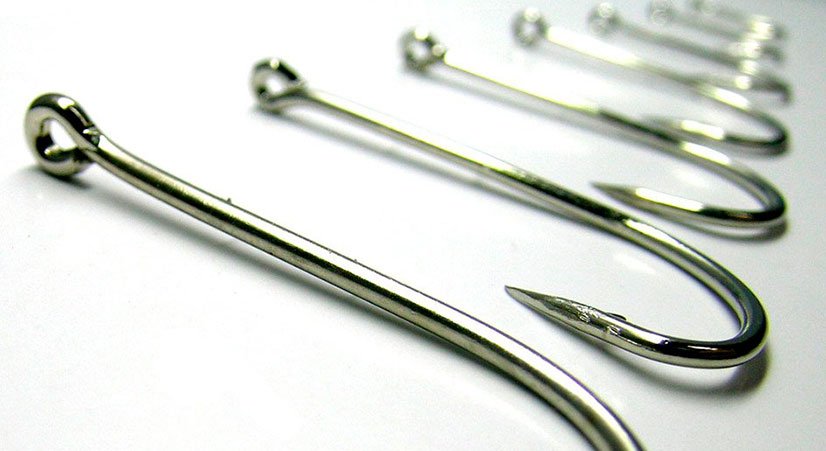
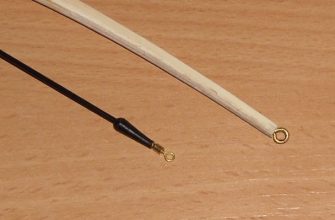

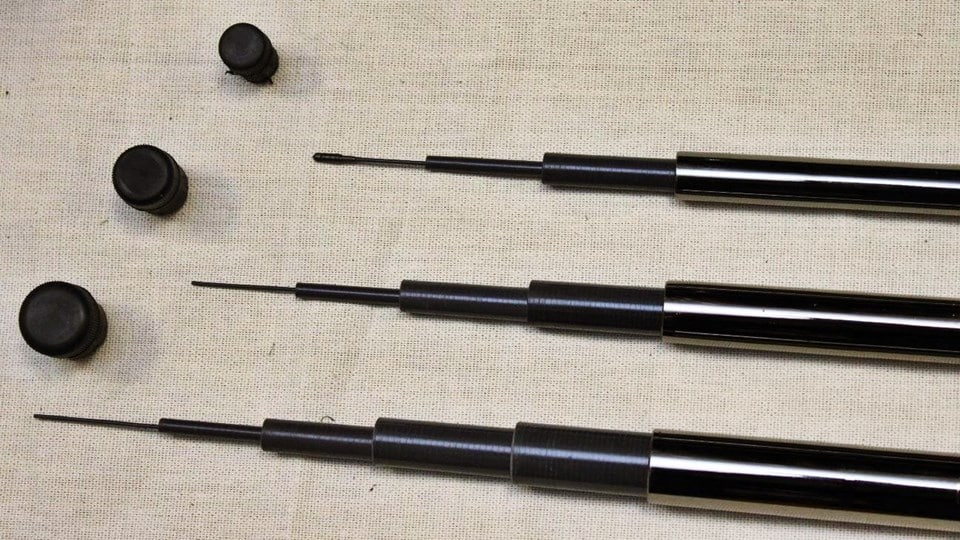
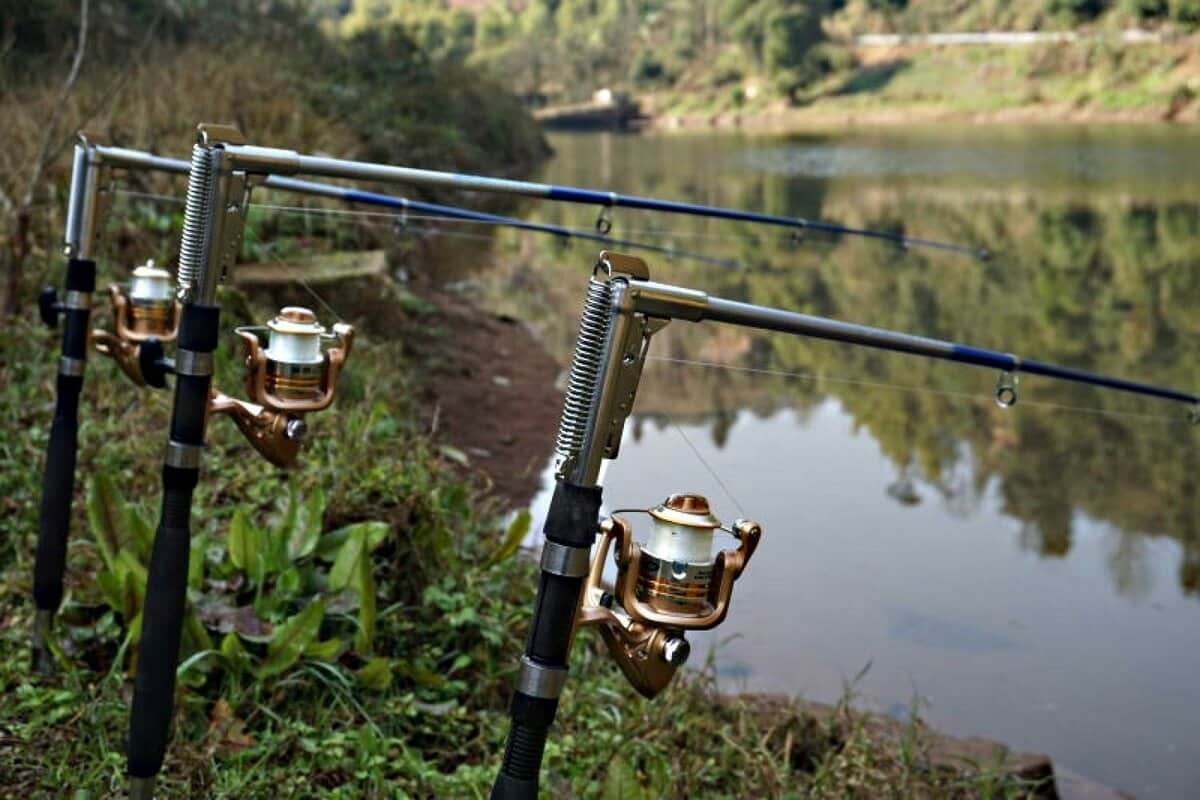
Perfetto spiegazione eccellente ,molto esaustiva grazie